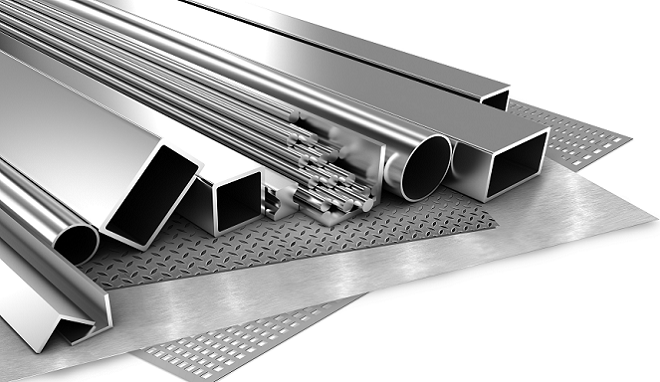The main alloying elements of stainless steels are manganese, silicon, chromium, nickel, cobalt, molybdenum, tungsten, titanium, niobium, aluminum, boron. Also rare earth metals such as cerium, lanthanum and others. Sometimes nitrogen.
How do alloying elements affect the structure and properties of stainless steel ?
Chromium (Cr) - makes steel resistant to corrosion and oxidation, reduces the tendency to brittle fracture. Chromium steel has increased resistance to tempering. Chromium increases the hardening of steel, helps to obtain high and uniform rigidity, provides increased wear resistance.
Nickel (Ni) - reduces the critical cooling rate of steel and increases the annealing of stainless steel, in annealed layers slightly increases its strength. Significantly reduces the tendency to brittle fracture of hardened and tempered steel at room and low temperatures. Increases steel resistance to oxidation when heated and its strength at elevated temperatures. Nickel ensures high plasticity and viscosity simultaneously with increased strength.
Titanium (Ti) - is introduced into stainless steels as a stabilizing element.
Molybdenum (Mo) - increases the annealing ability of steel, promotes fine grained steel, and prevents brittleness that occurs during slow cooling during the annealing process.
Manganese (Mn) - increases calcination, wear resistance and viscosity. Used as a deoxidizer and degasser to remove oxygen when melting metal. The high percentage of manganese in stainless steel increases its hardness and brittleness.
Phosphorus (P) - is considered a harmful impurity. It dissolves in ferrite, due to which the strength increases, but plasticity and impact toughness decrease with an increase in the tendency of steel to brittleness. In low-alloy steels with carbon of about 0.1%, phosphorus increases the strength and resistance to atmospheric corrosion.
Silicon (Si) - increases the strength of steel. Used as a deoxidizer and degasser to remove oxygen when melting metal.
Sulfur (S) - is usually considered a harmful impurity that affects the ductility, impact toughness, weldability, corrosion properties, surface quality of steel, etc. The harmful effect of sulfur is reduced by the presence of manganese in steel. The sulfur content in high-quality steels does not exceed 0.02 - 0.03%.
Vanadium (V) - increases strength, wear resistance, increases density and viscosity. Increases corrosion resistance by increasing the thickness of the oxide film. Vanadium carbide inclusions are very hard.
Tungsten (W) - adds strength, toughness and improves calcination. Maintains hardness at high temperatures.
Cobalt (Co) - increases strength and hardness, allows for hardening of metal at higher temperatures. Enhances the effects of other elements in complex steels.
Niobium (Nb) - Limits carbide growth. Limits machinability of stainless alloy. Creates the hardest carbides.
Nitrogen (N) - used in place of carbon in the steel matrix (nitrogen atoms function similarly to carbon atoms but have advantages in corrosion resistance).
Carbon (C) in stainless steel
In stainless steels containing 18% Cr and 10% Ni, strong carbide-forming elements are usually introduced (for example, titanium Ti - production AISI 321 | EN 1.4541, AISI 321H | EN 1.4878, which bind carbon, which is a harmful impurity.
In austenitic steels with low carbon content (0.03% - AISI 304L | EN 1.4306 | EN 1.4307), higher resistance to intercrystalline corrosion after welding is observed, as well as increased resistance to nitric acid in high concentrations and in other aggressive environments, which leads to their use for the manufacture of chemical equipment.
With an increase in carbon content, the weldability of steel deteriorates, as well as the property of deformation in a hot and especially in a cold state.
The low carbon content in steel results in increased plastic properties, high polishing properties and good weldability.
